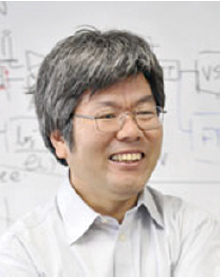



Biography: Professor Vladimir Poulkov, received his MSc and PhD degrees at the Technical University of Sofia (https://tu-sofia.bg), Bulgaria. He has more than 35 years of teaching, research and industrial experience in the field of Telecommunications. He is author of more than 150 scientific publications and is leading BSc, MSc and PhD courses in the field of Information Transmission Theory and Next Generation Access Networks. He has successfully lead and realized many R&D and educational projects and managed numerous industrial and engineering projects related to the development of the telecommunication transmission and access network infrastructure in Bulgaria, working with companies such as Ericsson, German Telecom and the major Bulgarian fixed and mobile operators. Currently he is head of the “Teleinfrastructure R&D” Laboratory at the Technical University of Sofia, Chairman of the Bulgarian Cluster of Telecommunications and Vice-Chairman of the European Telecommunications Standardization Institute (ETSI) General Assembly.
Abstract: The Wireless Access for Future Smart Cities as a Large Scale Complex Cyber Physical System
In future smart cities (SCs) highly developed and smart wireless communication access infrastructures will be needed for the connection of a huge number of different types of objects, sensors and user terminals. Such Access Networks (AN) must have the necessary autonomic and intelligent mechanisms to respond to the needs of an increasing variety of users (human and non-human), to cope with the high user density in SCs, their mobility, new and increasing service requirements, traffic dynamics, SC complex wireless channel conditions, etc. The wireless AN of a future SC must be a type of network which is able to offer revolutionary services, capabilities, and facilities that are hard to be provided via the heterogeneous network (HetNet) infrastructures that are implemented today.
This talk introduces the concept of the unified wireless access (UWA) for SCs and considers some of the challenges related to its functional requirements and design. The structure of a sample UWA network illustrating the functional relations between its components is presented. It is envisaged that such UWA architecture will perform and could be considered from the aspect of a large scale complex and intelligent cyber physical system (CPS) with control feedbacks and different types of users introducing stochasticity in the loop of the system. For the goal of analyzing the performance and functional relationships between the elements of such UWA a general modeling approach is introduced taking into consideration some of the basic approaches applied for CPS analysis.


Biography: Minoru Okada received the B.E. degree in communications engineering from the University of Electro-Communications, Tokyo, Japan, in 1990. He received the M.E and Ph.D. degrees in communications engineering from Osaka University, Osaka, Japan, in 1992 and 1998, respectively. From 1993 to 2000, he was a Research Associate at Osaka University. From 1999 to 2000, he was a Visiting Research Fellow at University of Southampton, U.K. In 2000, he joined the Graduate School of Information Science, Nara Institute of Science and Technology, Nara, Japan, as an Associate Professor and became a Professor in 2006. His research interest is wireless communications, including WLAN, digital broadcasting, and satellite communications. Dr. Okada is a member of the Institute of Image, Information, and Television Engineers of Japan (ITEJ), the Institute of Television Engineers of Japan, the Institute of Electrical, Information, and Communication Engineers of Japan (IEICE), and the Information Processing Society of Japan (IPSJ). He received the Young Engineer Award from IEICE in 1999.
Abstract: Mobility-as-a-Service (MaaS)
Mobility-as-a-Service (MaaS) is a future trend in transportation services. Users can share private and public transportation services for mobility instead of using personally provided transportation services. It could solve the current transportation problems such as traffic congestions and CO2 emissions. Wireless power transfer (WPT) and IoT (Internet of Things) are keys to establishing MaaS. WPT is capable of providing contact-less power supply to (Internet of Things) IoT devices as well as battery charging for moving electric vehicles (EV). Current WPT systems based on near-field coupling have problems in its limitation in the receiver positions and the power transfer efficiency. This presentation introduces WPT with multiple transmitters and receivers, or, a multiple-input-multiple-output (MIMO) WPT system for solving the mobility and efficiency problems in the current WPT systems. Since the proposed MIMO-WPT system deploys multiple transmitters over the area of interest, it is capable of expanding the mobility limitation. WPT using multiple transmitters and receivers could reduce the power transfer efficiency due to mutual coupling among them. We can solve this mutual coupling problem by optimizing the impedance-matching circuit. The proposed MIMO-WPT system achieves higher power transfer efficiency than the conventional single transmitter and receiver based WPT systems.

Hosted by

Sponsored by
